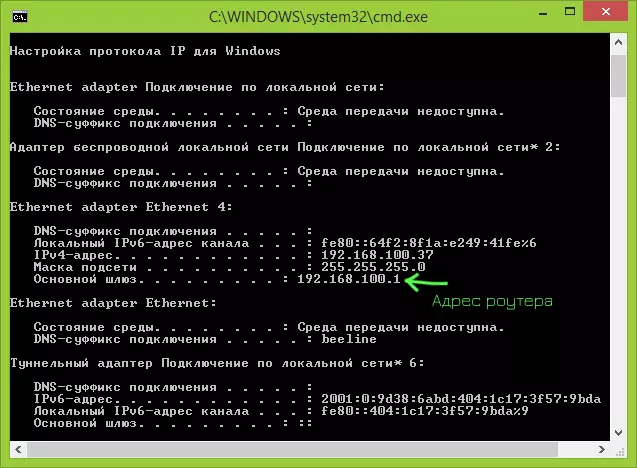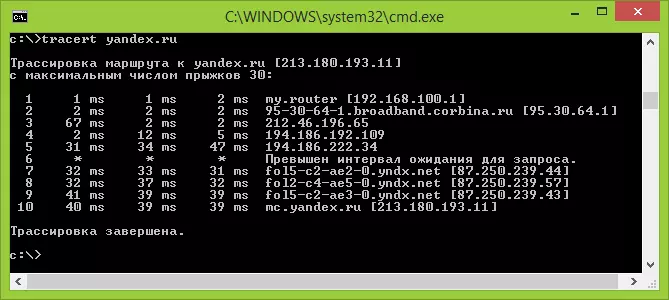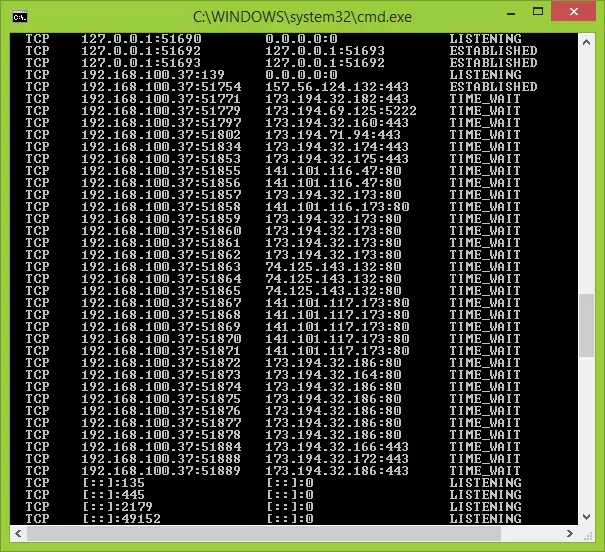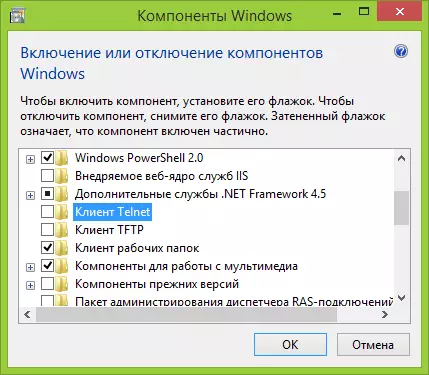
Of course, I cannot list all these commands, but I will try to tell some of them, I will try to tell.
Ipconfig - a quick way to find out your IP address on the Internet or local network
You can find out your IP from the control panel or going to the appropriate site on the Internet. But faster it happens to the command line and enter the ipconfig command. With different network connection options, you can get different information using this command.

After its input, you will see a list of all network connections used by your computer:
- If your computer is connected to the Internet via a Wi-Fi router, then the main gateway in the connection parameters used to communicate with the router (wireless or Ethernet) is the address you can go to the router settings.
- If your computer is on the local network (if it is connected to the router, it is also on the local network), you can find your IP address in this network in the relevant paragraph.
- If you use PPTP, L2TP or PPPoE connection on your computer, then you can see your IP address on the Internet in the settings of this connection (however it is better to use any site to define your IP on the Internet, since in some IP address configurations displayed when The execution of the IPConfig command may not match it).
IPConfig / Flushdns - Cleaning Cache DNS
If you change the DNS address of the server in the connection settings (for example, due to problems with opening any site), or constantly see the error like ERR_DNS_FAILE or ERR_NAME_Resolution_failed, then this command can be useful. The fact is that when changing the DNS address, Windows may not use new addresses, but continue to use the saved cache. The IPConfig / FlushDNS command clears the name cache in Windows.Ping and Tracert - a quick way to identify problems in the network
If you have problems with entering the site, in the same router settings or other problems with the network or the Internet, Ping and Tracert commands can be useful.

If you enter the Ping Yandex.ru command, Windows will start sending packets to the Yandex, when received, the remote server will notify your computer about it. Thus, you can see whether the packages do what among them the share of lost and how fast is the transmission. Often, this command is impressed when actions with the router, if, for example, cannot be logged in to its settings.
The Tracert command displays the path of the packet to the destination address. With it, for example, you can determine which node delays in transmission occur.
Netstat -an - Displays all network connections and ports

The netstat command is useful and allows you to see the most diverse network statistics (when using various startup parameters). One of the most interesting use options is to start a command with -an key, which opens a list of all open network connections on a computer, ports, as well as remote IP addresses from which connections are connected.
Telnet to connect to Telnet servers
By default, Windows does not have a client for Telnet, but it can be installed in the "Programs and Components" of the control panel. After that, you can use the Telnet command to connect to servers without using any third-party software.

This is not all the commands of this kind that you can use in Windows and not all options for their use, it is possible to output the result of their work into files, startup is not from the command line, but from the "Run" dialog box and others. So, if the efficient use of Windows commands are interested, and the general information presented here for novice users is not enough, I recommend searching on the Internet, there is there.
